Are you seeking a fabric that creates professional-quality outfits, but without the need for tricky parts like lining, hemming, or finishing? Or are you looking to expand your repertoire into an interesting modern fabric?
Maybe you need something sturdy and stylish, which can be used for a wide variety of projects – from form-fitting pencil skirts to long, flowing, draping dresses.
If this sounds like you, then it’s worth considering scuba fabric in your next project.
What is scuba fabric, you ask?
Scuba fabric is a thick, sturdy fabric that is often used for swimwear and other activewear. It is usually made from polyester or nylon, and has a smooth surface. Scuba fabric is known for its durability and resistance to water. It can be difficult to sew with, but the finished product is well worth the effort.
Outfits made from scuba fabric, especially scuba dresses, are currently rocking the world of home fashion, allowing anyone to create professional, beautiful styles that look great on any body type.
But just what is scuba dress material? What kinds of needles should you use, and where can you find a good pattern for scuba fabric?
Find out more in our all-encompassing guide on scuba fabric!
What is Scuba Fabric?
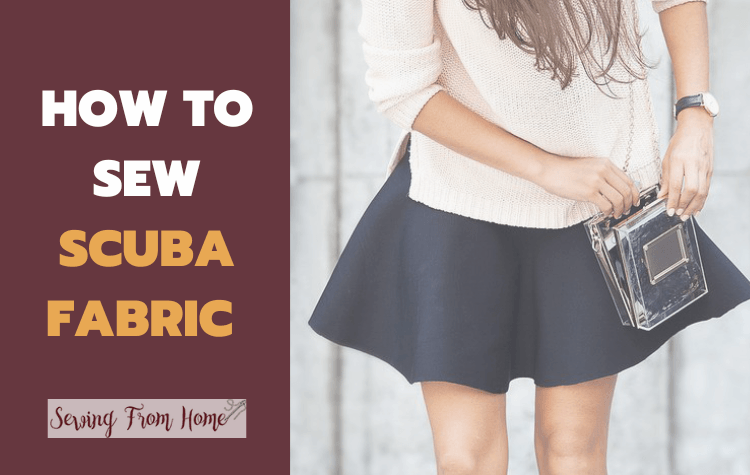
Scuba fabric is a kind of double knit material composed of spandex and polyester. Double knit means that this fabric was created with multiple sets of needles at once, connecting two layers of fabric together.
Scuba material has a very smooth texture, a fine gauge thread, and a slightly springy feel to it.
Despite its name, scuba knit is not meant for scuba diving or swimming – though its fabric is styled after the neoprene material used in creating scuba divers’ wet suits.
This fabric can vary in its thickness, making it suit a wide variety of clothing projects. It also cuts easily and has a warm, sturdy form, meaning you will not need to add a lining while creating warmer outfits.
Scuba fabric works ideally for both form-fitting types of dresses and longer, draping gowns. This modern fabric holds dye very well, and so it can be adorned with all kinds of bold, beautiful prints to fit your unique taste!
If you’re seeking a material that’s durable, versatile, and customizable – scuba fabric certainly ticks the boxes!
Neoprene Fabric Properties
You may have heard people talk about neoprene fabric at the same time as scuba fabric, using the terms interchangeably. However, neoprene and scuba knit are two different kinds of fabrics.
Neoprene is the kind used to create a scuba diver’s wet suit. It is made of polychloroprene, a synthetic rubber foam. This foam layer is placed in between two layers of another kind of fabric, usually a nylon or polyester knit, for comfort and warmth.
Some neoprene fabrics are also laminated to other types of material, such as fleece or velvet. As such, neoprene can be used for everyday outfits as well as scuba diving gear! Neoprene is far more durable and flexible than scuba fabric.
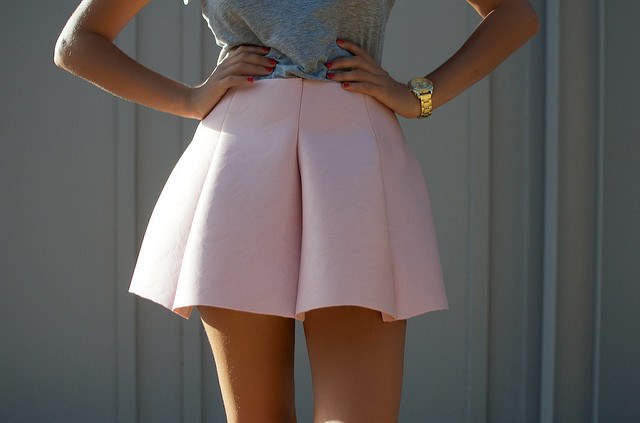
Scuba knit fabric was designed to be similar to neoprene in many ways. However, it’s mostly composed of polyester, and is a double knit fabric.
“Double knit” means that scuba fabric is thicker and more stable than other fabrics, though made from thinner filaments than the similar Ponte knit material.
Scuba fabric also drapes differently from neoprene fabrics, with a much more fluid appearance. Finally, it’s generally more comfortable to wear than outfits made out of neoprene; no stiff penguin-walk can be found here!
Scuba fabric can be more delicate and more easily damaged than neoprene fabric, so it’s important to consider the needs of your specific project when choosing to use one or the other.
However, many websites which sell fabric online use the terms “neoprene” and “scuba” to refer to the same fabric, so it can be difficult to tell from the web page what kind of fabric you are actually getting for your money.
Be sure to read the fabric composition section carefully for mentions of polychloroprene, and to check the reviews of the product on the site to ensure the satisfaction level of previous customers.
What is a Scuba Dress?
Scuba fabric can be used to create a wide variety of outfits, though you’ve probably heard about scuba dresses more frequently.
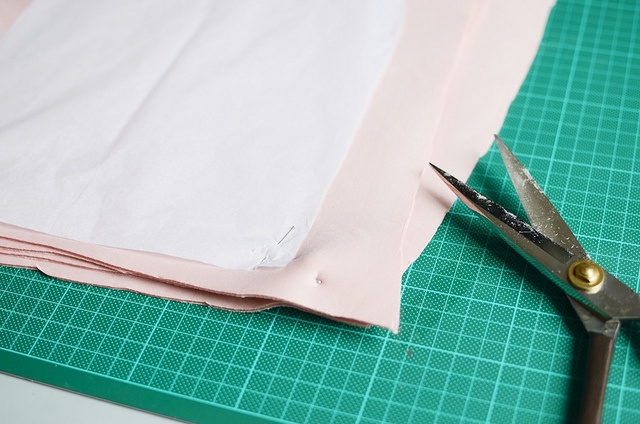
So, exactly what is a scuba dress?
Put simply, a scuba fabric dress is a dress made from this synthetic fabric.
Because of its sturdy structure, scuba knit works very well as the material for a pencil skirt.
Depending on how you sew and construct it, a scuba dress can either fit tightly to your body or drape loosely around it.
Because of the polyester content of the scuba fabric, scuba dresses tend to charge with static electricity pretty easily. Misting the dress with water can remove the static.
The best thing about scuba dresses is that they can flatter any body type, and therefore look great on anyone! With its spandex-like strength, the scuba fabric both provides support for your body and smooths out perceived imperfections.
Because scuba fabric comes in such a wide variety of colors, patterns, and designs, you can make a scuba dress that is perfectly professional for a day at the office, or one that is ideal for a fun, flashy night on the town with your friends. They’re all just as comfortable and good looking as each other!
Of course, scuba fabric can be used to create even more than a wide variety of dresses.
Skirts, shirts, jackets, and even dress pants made of scuba fabric will make you the center of attention at any event; both for the fashionable style you’re wearing, and for the pride you’ll have in knowing that you made this outfit yourself!
This video shows an example of how to make a scuba pencil skirt.
How to Sew Scuba Fabric
Are you ready to use scuba fabric in your next project?
First, be sure to keep in mind that scuba fabric, though thin, is a warm material. It is much better for fall or winter outfits than it is for making a summer dress.
It is always important to consider the needs of your specific project before selecting a fabric!
Once you have decided that scuba fabric is the best ingredient for your sewing project, here are some additional tips to consider.
Pre-Wash the Material
As you would with any other kind of fabric, be sure to pre-wash your scuba fabric before you measure and cut the material for your project. This will help avoid any shrinkage that may occur.
Since scuba fabric cuts very easily, you may wish to use a smaller rotary cutter, so as to avoid making mistakes as you measure and cut.
Work Slowly
When sewing, if you make an error, you can attempt to unpick the stitches.
However, this can be a tricky endeavor and can leave marks in the sensitive fabric, so it is better to work slowly from the start and avoid making these errors in the first place!
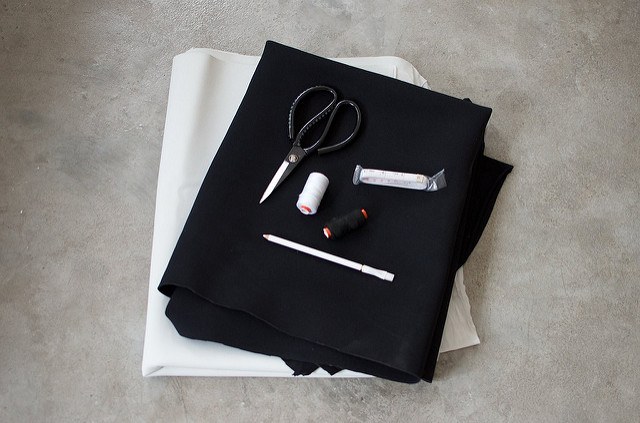
Trim By Hand
When trimming seams in scuba fabric, it is better to trim them by hand, rather than use the knife of an overlocker.
Scuba fabric has an extra amount of bulk to it compared to other kinds of fabric, which can interfere with the overlock knife.
Raw Edges Are Welcome!
Because scuba knit does not unravel, you can leave the edges raw at the end of the project, and leave the seams and hems unfinished as well.
However, you may find that the edges look nicer when finished, depending on the pattern you’re using. A bias bound hem works particularly well with scuba fabric projects.
Be Careful of Heat
Scuba fabric is very sensitive to heat. If brought to too high of a temperature while ironing or washing, the fabric may gain a mark, or even melt!
When ironing scuba fabric, put the iron on a low setting, and pay extra attention to the pressing routine for the best results.
When washing your scuba fabrics, be sure to set the washing machine on a cold temperature cycle, around thirty or forty degrees. Always wash the scuba fabrics with clothing of similar colors.
It is better to hang your scuba fabric clothing to dry than to put it in a tumble dryer, because the higher temperatures of the dryer may damage the fabric.
If you make a scuba dress with foil print, you may want to hand wash it in cold water, rather than using a washing machine. At the least, turn it inside out before putting it in the washing machine on a very gentle cycle.
Which Needles to Use For Scuba Material
Because scuba fabric is prone to snagging or slipping on a sewing machine, due to its unique, smooth texture, it is best to use either a ballpoint or stretch needle when sewing scuba fabric.
Ballpoint needles, also known as “jersey needles,” slide in between the individual yarns of the fabric, instead of piercing the cloth. This removes any risk of snagging and tearing the fabric when sewing a knit.
Stretch needles have a deep scarf – the indent on the side of the needle. This indent is ideal for sewing with fine or lightweight materials, such as scuba fabric and other spandex or elastic materials. It helps to keep the stitches from slipping.
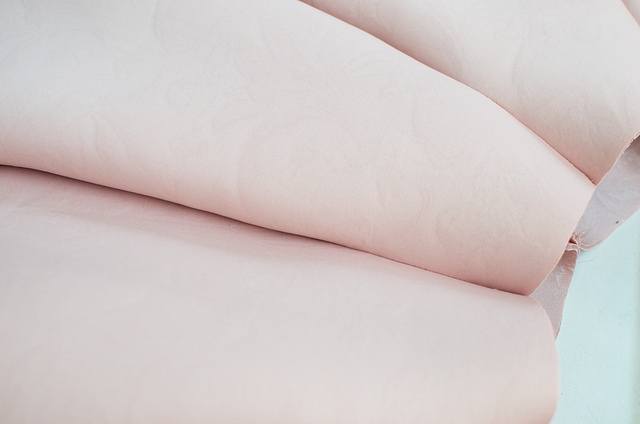
Stretch needles also have a special coating which allows them to slip through stitches without tearing the fabric.
When finishing the seams, consider using a ballpoint needle stitch, a twin needle stitch, overlocking, or overcasting to create a professional finish.
However, due to the sturdy nature of scuba fabric, finishing the seams is not necessary.
Which Sewing Feet to Use
You do not want your scuba fabric to bunch underneath the presser foot, so for the best results, be sure to evenly feed the scuba fabric into the sewing machine as you work.
To do this, use a walking foot. The walking foot has teeth on it, very much like the feed dogs that you find at the base of the sewing machine, which feed the fabric into the machine and towards the needle.
These extra teeth help move the fabric by working from the top, taking fabric that tends to stick to the machine, like the double knit of scuba fabric, and helping it move along more easily without bunching.
Scuba Fabric Alternatives
If you are looking to create a more durable outfit that still looks like a scuba dress, you can use neoprene fabric.
Just keep in mind that neoprene is generally less comfortable to wear than scuba fabric, and less malleable to work with!
What if you desire a material similar to scuba fabric, but which is not so heavy and more appropriate for a summer dress?
Scuba crepe is similar to regular scuba fabric, but is much lighter than the standard version. This fabric is similar to a traditional lycra fabric, though it has a crepe textured finish.
Other fabrics with spandex or polyester content in their mixes, or other double-knit fabrics, will have similar traits to scuba fabric.
Ponte is another double knit fabric with similar qualities to scuba knit, though while scuba fabric usually contains polyester and lycra, ponte consists of a blend of lycra, polyester, nylon, and rayon.
This video shows some more information on how to sew with neoprene.
Where to Find Scuba Fabric Patterns Online
Do you want to make a scuba fabric dress, shirt, skirt, or jacket, but aren’t sure how to start? Don’t be afraid to pick the brains of other members of the sewing community for help!
If you’re looking for scuba fabric patterns, here are a few of our favorites:
- Fabric.com – Another great option for finding scuba fabric patterns online. They have a wide variety of prints and solids to choose from.
- Jo-Ann Fabric and Craft Stores – If you have a Jo-Ann Fabric store near you, be sure to check out their selection of scuba fabric patterns. They typically carry a good variety of prints and solids.
What’s your favorite way to use scuba fabric?

Good topic on Scuba fabric. Scuba fabric is comfortable especially for office goers who have to live a long time in offices. also this is good the way how to use scuba fabric for creating dresses.
Very helpful and interesting,thank you.